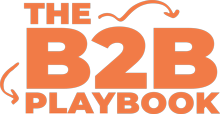I recently caught up with a friend of mine (Adem Manderovic) who reminded me of an amazing ‘old school’ tactic to generate demand in a way more efficient way than most marketers and sales people will go about it.
It’s going to help you:
- nail your Ideal Customer Profile (ICP)
- prioritise who you should prospect first better
- get in front of your Dream Customers more efficiently
And help you create smarter marketing campaigns that work better because they’re rooted in motivations, barriers, and buying criteria.
It’s called ‘Cataloguing the Market’ – and in this article I’m going to show you why, when and how to do it.
(P.S. we recorded a whole episode with Adem Manderovic who talks us through how he ‘catalogues the market’ – listen or watch below).
Listen to The Episode
Watch The Episode
Why and When You Need To Catalogue The Market
Prior to launching any Demand Generation program, a B2B marketer should first narrowly define their ICP. This means nailing who your ‘best’ customers are, defining what makes them so great (think firmographics, demographics, psychographics), and then making a list of more of these. Check out our guide to segmentation if you need a hand doing that.
Once you’ve done that, you should have a group of target accounts that you can make it your mission to win over for your next marketing campaign. What good marketers typically do from here is they get a list of the buying committee with their contact details for each of these target accounts, and get to work in getting their key messages in front of them.
But you have limited time, budget and staff to orchestrate building a relationship with each of these target accounts. Your marketing efforts will drive greater return sooner if you’re able to focus on those who are in-market now looking for a solution like yours, or likely to be soon.

So how do we find out which of these accounts are likely to be ‘in-market’ so you can prioritise them?
Sure, you can buy intent data from platforms like Bombora, but the validity of their data is questionable. Plus they’re not going to be able to tell you ‘insider’ information from each account to help you win that deal.
You know what will?
Cataloguing the market.
What is Cataloguing the Market?
In its most simple form, cataloguing the market is calling your target accounts, and asking them a series of questions to:
- understand if they’re in-market currently
- get a list of buying criteria and objections you can use to inform your marketing and sales to win the deal
It’s a ‘pre-tech’ common practice approach that was used to great effect in sales and marketing roles in the 90s and early 2000s before tech platforms dominated strategy.
But the qualitative insights it provided are so much more powerful than any data set you can purchase.
How To Catalogue The Market (and What Questions to Ask)
To effectively catalogue the market, call up your list of contacts at target accounts and ask the following key questions:
- Who are you with right now [for the existing service/product they use]?
- What do you like about it?
- Is there anything you don’t like about it?
- Are you in a fixed term contract for that?
These questions reveal what they currently use, what aspects they value, and any pain points with their existing solution. Also, understanding contractual commitments indicates when they may be going back out to tender or open to new options.
He also recommends you ask the following questions:
- If you were going to tender, what would that tender need to contain?
- If you had the ability to change something with a magic wand, what would it be?
Knowing their desired tender or RFP requirements informs the specifics you’d need to put in a bid to win their business away from their current provider. In addition, using open-ended, probing questions as follow ups help uncover more details. This draws out unarticulated frustrations that represent opportunities to improve upon their current solution.
Create a spreadsheet with your key accounts, and note which ones are currently in-market. Which ones are likely to be ‘in-market’ soon based on when their existing contract ends? Also in another column, note any existing pains, frustrations with their current provider or other valuable information you picked up from the call.
You can now bucket your target accounts into those that are ‘in-market’ vs those that aren’t so you can focus on them.
Arm Sales with Real Buyer Knowledge
Beyond smarter demand gen, cataloguing actually equips sales reps with conversational guides on winning deals. Cataloguing logs preferred terminology on objectives so reps mirror natural dialogue. It provides benchmarks addressing common requirements on security, support and governance easing procurement selection. Sales also gain visibility into whether there are any gaps in their existing solution that can be filled by your solution.
This means that your reps will no longer need to recite generic pitches, but rather display deep understanding of pains and priorities within initial meetings. Cataloguing essentially hands them talk tracks and negotiated responses to outmanoeuvre the status quo. Marketing creates a competitive edge through smarter content while sales deploys it surgically within active opportunities.
Channel Interest to Relevant Contacts
If you want to take your cataloguing one step further to make your marketing campaigns even more efficient, we recommend creating another column on your spreadsheet for your target accounts to show which channel they prefer being communicated on. Some buyers will respond better to emails, others to phone or social media. You can use services like Task Minions to help you validate each of these.
That way if a marketer or sales person wants to reach out via phone, they can get to conversations much faster by prioritising the contacts that are more likely to pick up.
Cut Through the Hype
Beyond automated intent signals, cataloguing delivers the hallowed grail of B2B marketing – genuine customer insights that will help you win deals. Cataloguing works equally for small boutiques and huge enterprises looking to sharpen strategy with real world voices. It provides efficient demand generation rooted in customer truths – which is invaluable for any marketer looking to drive growth.
Get back to basics, building campaigns that compel action will be far more effective than those with the novelty of being clever or viral. Sometimes picking up the phone will deliver everything you need to boost revenue right now.
Create Your Demand Engine in 12 Weeks
B2B marketing strategy that shows you step-by-step how to drive revenue









